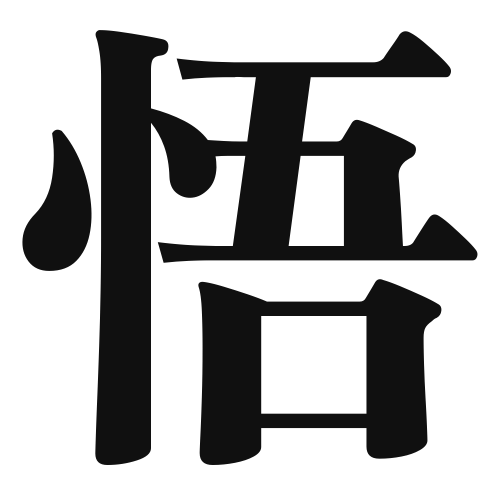1. Overview of Meaning
The kanji “悟” (go) means “to understand” or “to perceive.” It often conveys a sense of deep comprehension or enlightenment, particularly in spiritual or philosophical contexts.
2. Formation and Radicals
The kanji “悟” is composed of two parts: the radical “心” (kokoro), which means “heart” or “mind,” and the phonetic component “悟” itself, which suggests the idea of understanding. This kanji is classified as a 形声文字 (keisei moji), meaning it combines meaning and sound elements.
The radical “心” indicates that the concept of understanding is closely related to the heart or mind.
3. Examples of Usage
Common words and phrases that include “悟” are:
- 悟り (satori) – enlightenment or realization
- 悟る (satoru) – to understand or to perceive
Example sentence in daily conversation:
「彼は人生の真理を悟った。」(Kare wa jinsei no shinri o satotta.) – “He has come to understand the truths of life.”
4. Synonyms and Antonyms
Similar kanji with related meanings include:
- 理解 (rikai) – understanding, which emphasizes comprehension.
- 認識 (ninshiki) – recognition, which focuses on awareness.
Antonyms include:
- 無知 (muchi) – ignorance, meaning lack of knowledge or understanding.
5. Cultural and Historical Background
The kanji “悟” is deeply connected to Japanese culture, particularly in the context of Zen Buddhism, where achieving “satori” is a key goal. It reflects a journey towards enlightenment and self-awareness.
Common proverbs and idiomatic expressions include:
- 悟りを開く (satori o hiraku) – to attain enlightenment.
This phrase emphasizes the importance of personal growth and understanding in Japanese philosophy.
